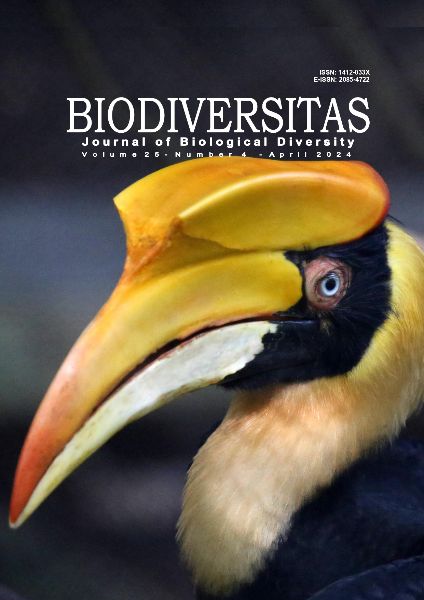A phenology-based linear spectral unmixing method for rice varieties identification from Landsat 8 Satellite Image in Ngawi District, East Java, Indonesia
##plugins.themes.bootstrap3.article.main##
Abstract
Abstract. Cipta IM, Jaelani LM, Sanjaya H. 2024. A phenology-based linear spectral unmixing method for rice varieties identification from Landsat 8 Satellite Image in Ngawi District, East Java, Indonesia. Biodiversitas 25: 1691-1702. Ngawi District is a prominent rice-producing district in East Java, Indonesia. Based on the BPS data from 2021, Ngawi District yielded a total of 786.49 thousand tons of paddy. Multiple strategies to enhance rice production include enhancing rice productivity, increasing paddy fields, and using effective land management techniques. Utilizing a superior breed of seeds can augment productivity. Remote sensing can be utilized to obtain such data, one of which is the Linear Spectral Unmixing (LSU) technique. The LSU approach is used to determine the proportion of a pure object's presence in a pixel. The Inpari 32 rice variety is the predominant type identified from the analysis of the processing outcomes utilizing satellite imagery. In addition, validation was performed by utilizing many sample locations distributed around Ploso Lor and Rejuno Villages, resulting in consistent findings between the data analysis and the actual conditions observed in the field. The RMSE calculation was conducted on both sets of processing results, and the most optimal RMSE value was achieved when processing was performed using Landsat 8 image data, yielding an RMSE value of roughly ±1.2%. The accuracy of the model was evaluated using a confusion matrix, which yielded an overall accuracy rate of 86.67%.

